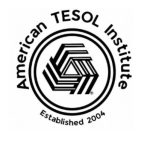Forget passive lectures and rote memorization! Project-based learning (PBL) is a dynamic approach that transforms students from passive recipients of information into active explorers, collaborators, and creators. By engaging them in real-world projects, PBL ignites their curiosity and provides a fertile ground for developing essential listening, writing, reading, and speaking skills.
What is Project-Based Learning?
PBL immerses students in complex, challenging projects that mirror real-life scenarios. Instead of simply learning about a topic, they actively investigate, problem-solve, and create tangible products or presentations. This hands-on approach fosters deep understanding and cultivates crucial 21st-century skills.
How PBL Enhances Key Skills:
Listening:
PBL thrives on collaboration. Students actively listen to their peers during brainstorming sessions, group discussions, and presentations. They learn to value diverse perspectives, analyze information, and build upon each other’s ideas.
Writing:
From research reports and project proposals to reflective essays and creative writing pieces, PBL offers diverse writing opportunities. Students learn to articulate their thoughts, organize information, and communicate effectively in various formats.
Reading:
PBL fuels a need for information. Students delve into articles, books, and online resources to gather data, analyze perspectives, and build a strong foundation for their projects. They learn to read critically, evaluate sources, and extract key information.
Speaking:
PBL provides a platform for students to share their knowledge and express their ideas. Through presentations, debates, and collaborative discussions, they develop confidence in public speaking, learn to articulate their thoughts clearly, and engage in persuasive communication.
Examples of PBL in Action:
- Designing a Sustainable City: Students research environmental challenges and collaborate to design a model city incorporating sustainable solutions. This project involves presentations, debates, and the creation of visual models and reports.
- Creating a Historical Documentary: Students research a historical event and produce a documentary film. This project involves interviewing experts, analyzing primary sources, writing scripts, and filming and editing video content.
- Developing a Business Plan: Students develop a business plan for a new product or service. This project involves market research, financial analysis, marketing strategies, and presenting their plan to a panel of “investors.”
Tips for Implementing PBL:
- Start with a Driving Question: Frame the project around a compelling question that sparks curiosity and encourages inquiry.
- Provide Choice and Voice: Allow students to choose their project topics and roles within their groups, fostering ownership and engagement.
- Scaffold Learning: Break down the project into manageable steps, providing clear guidelines and support along the way.
- Encourage Collaboration: Foster a collaborative learning environment where students can share ideas, learn from each other, and build teamwork skills.
- Provide Authentic Assessment: Evaluate student learning through presentations, portfolios, and real-world applications of their knowledge.
Conclusion:
Project-based learning is a powerful tool for engaging students and developing essential literacy skills. By immersing them in real-world projects, PBL fosters deep learning, collaboration, and creativity, preparing them for success in the 21st century. So, ditch the textbooks and embrace the power of PBL to unleash the full potential of your students!



